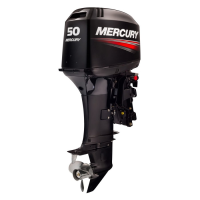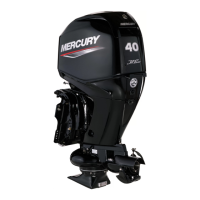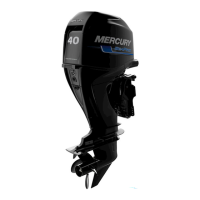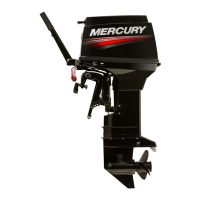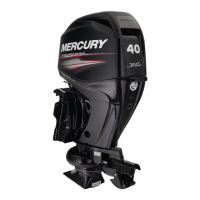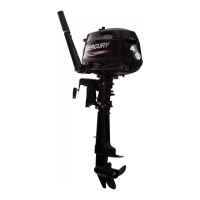FEATURES & CONTROLS
26
Warning System
Function Sound Description
Engine Over Temperature Continuous Engine Over Heat
Low Oil Pressure Intermittent Short Beeps Low Oil Pressure
ENGINE OVERHEAT
If the engine overheats, immediately reduce throttle speed to idle. Shift the outboard into neutral and
check for a steady stream of water coming out of the water pump indicator hole.
If no water is coming out of the water pump indicator hole or flow is intermittent, stop engine and check
cooling water intake holes for obstruction. If no obstruction is found, this may indicate a blockage in the
cooling system or a water pump problem. Have the outboard checked by your dealer. Operating the
engine while overheated will cause engine damage.
If a steady flow of water is coming out of the water pump indicator hole and the engine continues to
overheat, consult your dealer. Operating an overheated engine will cause engine damage.
NOTE: Should overheating occur and you are stranded, stop the engine and allow it to cool down. This
will usually allow some additional low speed (idle) running time before the engine starts to overheat again.
LOW OIL PRESSURE
The warning system will be activated if the oil pressure drops too low. First, stop the engine and check
the oil level. Add oil if necessary. If the oil is at the recommended level and the warning horn continues
to sound, consult your dealer. Engine speed will be limited to 2000 RPM, however you should not
continue to run engine.
Warning System - Electric Starting Models
WARNING HORN SIGNALS
The outboard warning system incorporates a warning horn inside the boat. Remote control models will
have the warning horn located inside the remote control or connected to the ignition key switch. Tiller
handle models will have the warning horn located in the ignition key panel.
a -
Horn inside remote control
b - Horn connected to ignition key switch
c - Horn in ignition key panel
There are two types of warning horns to alert the operator of an active problem within the engine's
operating system.
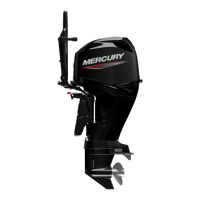
